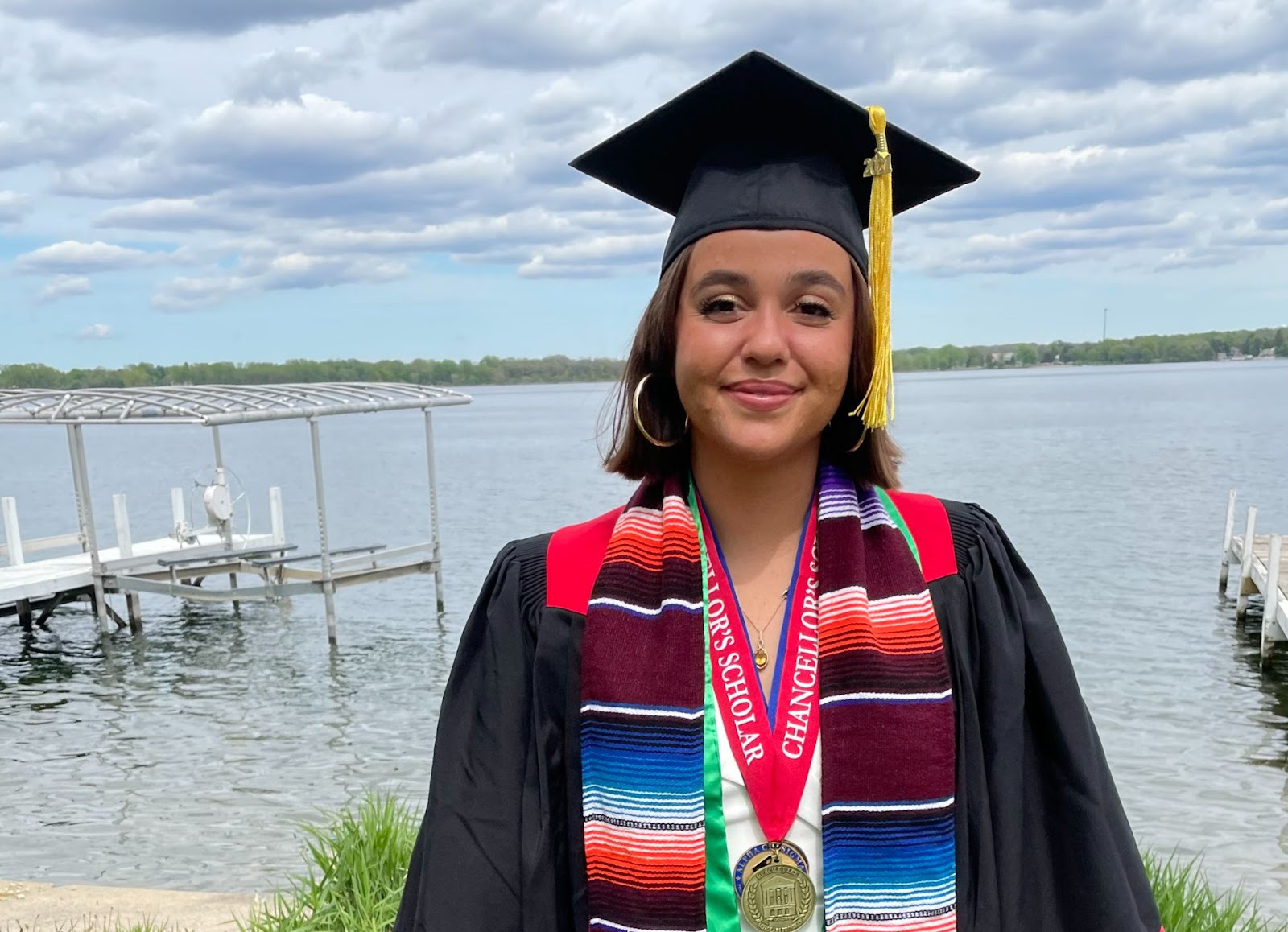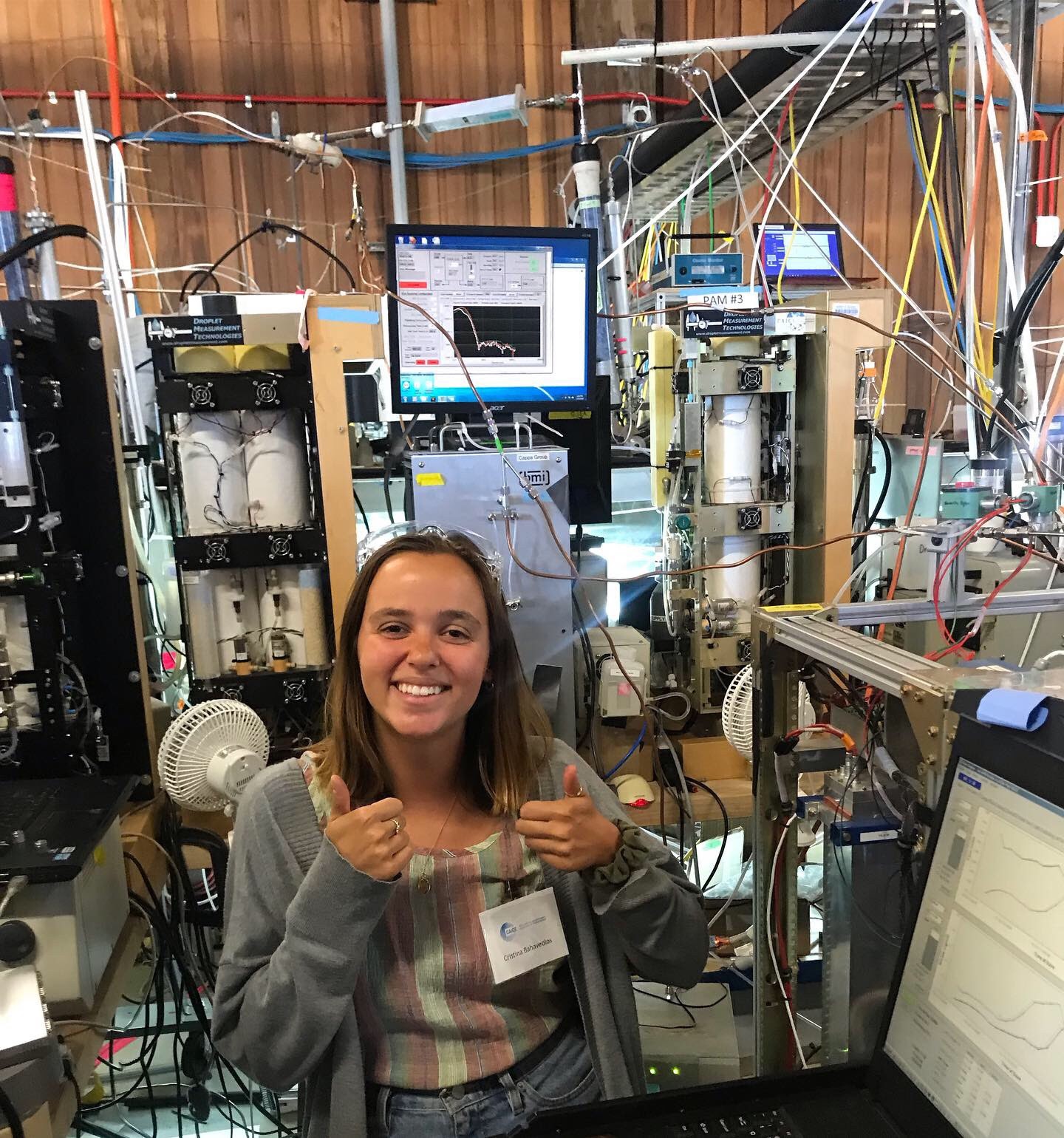Cristina Bahaveolos: Exploring different possibilities in climate science

Cristina Bahaveolos is a SOARS Protégé in the 2021 cohort working with the Ozone and Water Vapor Division at Global Monitoring Laboratory (GML). She is a recent graduate of the University of Wisconsin - Madison with a B.S. in chemistry and minors in Environmental Studies and Chicana/o & Latina/o Studies.
Her summer research project involves examining how anthropogenic pollution influences regional tropospheric ozone climatology. Specifically, she is measuring the relationship between ozone and carbon monoxide - a chemical species that has the unique position of being both a precursor for ozone and a significant tracer of anthropogenic pollution. Understanding this relationship can help us better locate tropospheric ozone as an air pollutant and evaluate its climate impact.
Our conversation follows.
-
When did you become interested in atmospheric chemistry? Was there a singular experience that drew you into the field?
I actually never considered STEM majors coming into college. I started as a political science major and was really thinking of making positive social impacts in my future career. I happened to take a class and realized the important role climate change played in all of the social issues I cared about. Recognizing it as a way I could have a positive impact, I switched my major to Environmental Science and then Chemistry because I was more interested in chemistry and physics than biology. Atmospheric chemistry felt like the natural next step.
-
What was your undergraduate research experience like?
I started out modeling satellite data on air pollution in Dr. Tracey Holloway’s lab but quickly realized that I wanted to do more hands-on work. I spent the rest of my undergrad professor Tim Bertram’s group studying nascent sea spray aerosol production. Sea Spray aerosols form when waves break. We ran lab simulations to measure the size distribution of nascent sea spray aerosol given various cation and anion concentrations. In the summer of 2019, research with Scripps Institution of Oceanography allowed me to participate in a large field campaign collecting data to study the factors influencing sea spray aerosols. Over 60 researchers participated in this fieldwork.
During the field campaign, I collected data on the count and size distribution of nascent and atmospherically aged sea spray aerosol, as well as the cloud condensation nuclei activity. Aerosols scatter ultraviolet radiation and also form clouds. Both can contribute to climate cooling and studying their formation processes and patterns can help us evaluate their impact on climate.

-
You worked at Farm 2 Facts as a scientific consultant. Could you share with me more about this experience? What was your project and how does that differ from your previous experience?
Farm 2 Facts is a company that supports farmer’s markets, which is a sustainable source of food distribution. They help markets make more educated decisions on operations management and collect data that can be used to support national-scale policy.
During my time there, I worked on a bigger project that aims to evaluate the ecosystem services impacts of a wide range of sustainable farming practices. I conducted a literature review on this topic to provide background knowledge on various chemical, physical, and biological processes involved in farming.
-
How would your internship with Global Monitoring Laboratory help you reach your goal?
For graduate school, I am interested in greenhouse gas monitoring or carbon capture research. This opportunity allows me to reorient myself and move closer to my goals because my undergraduate research was mostly focused on atmospheric aerosols. It’s also helping me continue to develop my skills as a scientist.
-
How did you know about the SOARS program?
I am always looking to get more research experience and SOARS is a great program for supporting atmospheric scientists just starting their careers. Because it’s my first summer in the program, I submitted my research interests, and SOARS matched me with a lab. I didn’t know where I would end up interning, but I am so happy that I am able to work under Irina and Peter at the GML this summer.
-
What is your next step?
I am planning to take this year off to work and apply to graduate schools. I am interested in applying for a Ph.D. either in geoengineering or atmospheric chemistry working on greenhouse gas monitoring or carbon capture.
-
Any advice for future applicants?
It is really important to have conversations with people. Ask people about their projects, learn about their experiences. These types of conversations will help you find your path.
